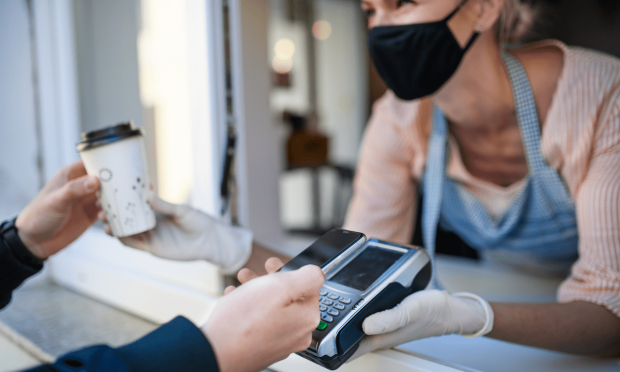Settlements And Digital Experience Come Up Big For SMB Holiday Season

The holiday shopping rush is always critical for Main Street small and medium-sized businesses (SMBs) in the U.S. — a reality more starkly drawn in 2020 as some of those small shops and restaurants are just barely holding on after months of a pandemic that has been battering the bottom line since March. And as the case count keeps on ticking up, closures and restrictions are once again going into effect across various states. It’s looking like this holiday season, traditionally a time when consumers spend, is going to be a little more difficult this year.
And challenges though there may be, SMBs are not going down without a fight. According to the data in the PYMNTS/American Express 2021 New Merchant Business Models Playbook, they’re are heading into holiday 2020 and early 2021 with an eye toward adopting technologies and strategies that empower them to provide seamless shopping experiences in spite of obstacles. They’re looking to write a real-time roadmap for not only surviving the next several weeks of the holiday season, but thriving in the year starting up just after it spins down.
Consumers have gone digital — according to PYMNTS’ consumer survey data, 41.9 percent of consumers have switched from shopping for retail products in stores to shopping for them online, while 16.6 percent have gone from dining in restaurants to ordering their food online since the pandemic began. And those habits aren’t going anywhere even when a vaccine takes the public health risk out of it — 83.9 percent of consumers who have shifted to retail shopping online plan to keep doing so as often as they are now once the pandemic has subsided while 80.1 percent of quick-service restaurant (QSR) consumers who have shifted to ordering restaurant food online plan to continue doing so after the pandemic is over.
Small Business Saturday, the annual small business promotion event by American Express, is celebrating its 11th year in 2020 — on Nov. 28 — and it will be, according to American Express, the year of the social media promotion of SMBs nationwide. According to American Express estimates, SMB endorsements could be worth as much as $197 billion for the U.S. SMB economy this year. In 2019, Small Business Saturday brought in 110 million people and generated a record $19.6 billion in sales. A repeat, plus some, is what SMBs nationwide are looking for this season.
SMBs have spent much of the last year boosting the level of their digital game, pushed by rapidly digitizing consumer behavior. As of this fall, a third of consumers report they are very or extremely likely to select a merchant based on the availability of suitable digital, touchless offerings and that on average, their digital experiences have gotten a lot better over the course of the pandemic period. That’s buttressed by services like the addition of touchless payment options in store, curbside touch-free buy online, pickup in store (BOPIS) options, improved digital inventory scanning and better online ordering capacity.
But, As Karen Webster pointed out in a recent commentary, that rapid digitization among both consumers and merchants has created something of a pinch for small merchants.
“Some merchants are doing better than others — the enterprise merchants, in particular, are capturing more of the consumer’s attention and spend. Part of that is because they have the resources to make a quicker pivot, or maybe they think they stand to lose more if they don’t. In some cases, like retail and restaurants, it’s because they are open for business. Many of the Main Street businesses, which were once options for consumers, have closed or operate with limited hours and inventory,” Webster noted.
Broken down for simplicity, there are overarching areas where small merchants need to be focused to stay in step with consumer needs: contactless payments, keeping creative to keep revenue flowing, revitalizing the in-store experience and tapping into slightly out of the box things like subscription models to keep the business more steady during uncertain times.
Tying all of that together, is building a truly omnichannel model that lets consumers design the commerce journey that works best for them, Katie Swett Miller, eCommerce product lead at Square, noted in a conversation with PYMNTS.
“In March, we saw a lot of sellers throwing a few things at the wall to figure out, ‘What’s going to stick, what are my buyers interested and how can I adapt really quickly through this period?’” Miller said. “Now we’re in a period where those sellers have figured out some of the pieces that have really worked for their businesses, and [they] are trying to figure out, “How do I how operationalize this and grow it even more going into 2021?’”
SMBs are especially learning that time is a factor — and the lags between items being out of stock in store vs. when they are listed as out of stock online is actually a rather costly miss, Miller explained. SMBs are realizing that they cannot afford lags between items being depleted in store and when they are listed as out of stock online.
And they also can’t afford a lag time for payments settlements. Joint research between PYMNTS and Visa, in a study titled Marketplaces As Retail’s New Front Door, found that 60 percent of surveyed businesses that are not currently using online marketplaces would like to do so. And 60 percent of surveyed firms selling across online marketplaces would take their business to one that offers real-time settlement. Another 62 percent of businesses and 78 percent of individual sellers in the study (which included more than 1,000 businesses and individuals generating up to $10 million in sales) reported that they use marketplaces to reach more customers.
In an interview with Webster, Mike West, head of global commercialization for Visa Direct, noted that enterprises — particularly smaller ones — have been evolving their strategies to keep pace with the rapid shifts in how consumers work, shop and pay. But getting funds settled more quickly into their accounts can make all the difference in giving them the cash cushions they need to expand, weather economic shocks and even get their suppliers paid in a timely manner.
Real-time settlements can help close cash-flow gaps as these smaller firms navigate the day-to-day challenges of buying inventory, paying bills and covering shipping costs.
“We’re seeing really strong adoption from a lot of marketplaces now” that are realizing the value of real-time settlement, said West, as companies seek to have working capital available to meet new challenges and opportunities as they arise. The potential for turbo-charged commerce, done with speed, is vast. Visa and PYMNTS found that marketplaces can capture a collective $82 billion to $141 billion per year by adopting real-time settlement options. Call it a greenfield opportunity, as only 3.5 percent of all Main Street businesses report using online marketplaces.
Ultimately, however, as Square’s Miller noted, what the data seems to indicate clearly over and over is the absence of one magic bullet digital upgrade that saves the season for a battery of main street merchants. It is the series that, taken together, means that no matter where the consumer is shopping this season — on mobile, online or even swinging into the store — they are ready to meet them, and offer them the transaction when they want, how they want.
That’s true for holiday 2020 — and will remain true a year from now during holiday 2021, even when COVID-19 is (hopefully) just an unpleasant memory.
